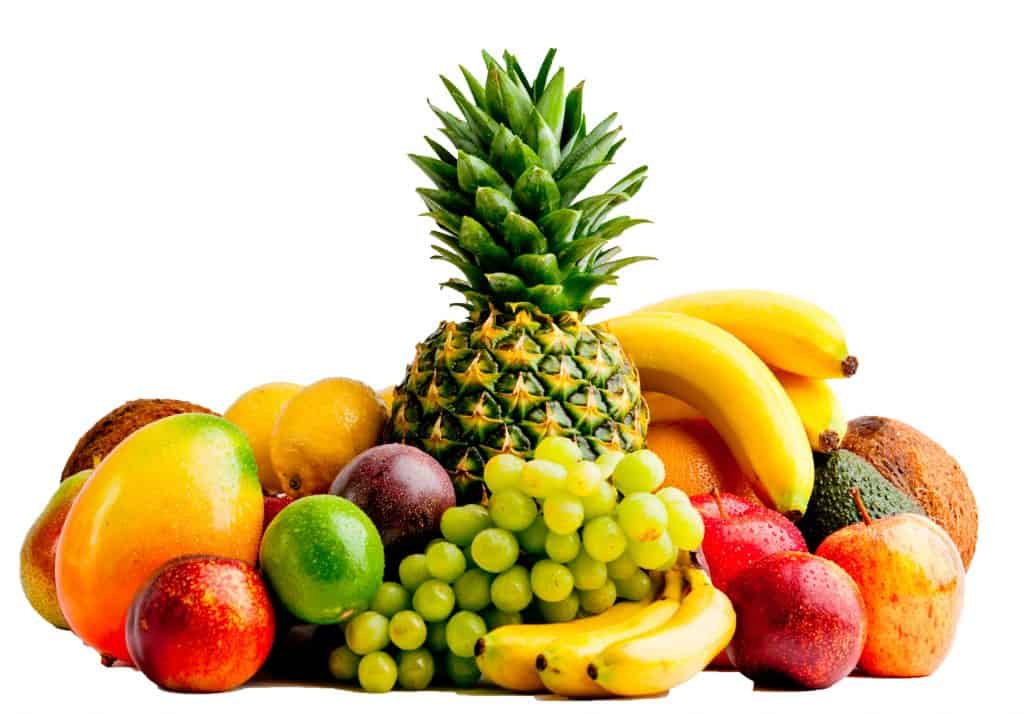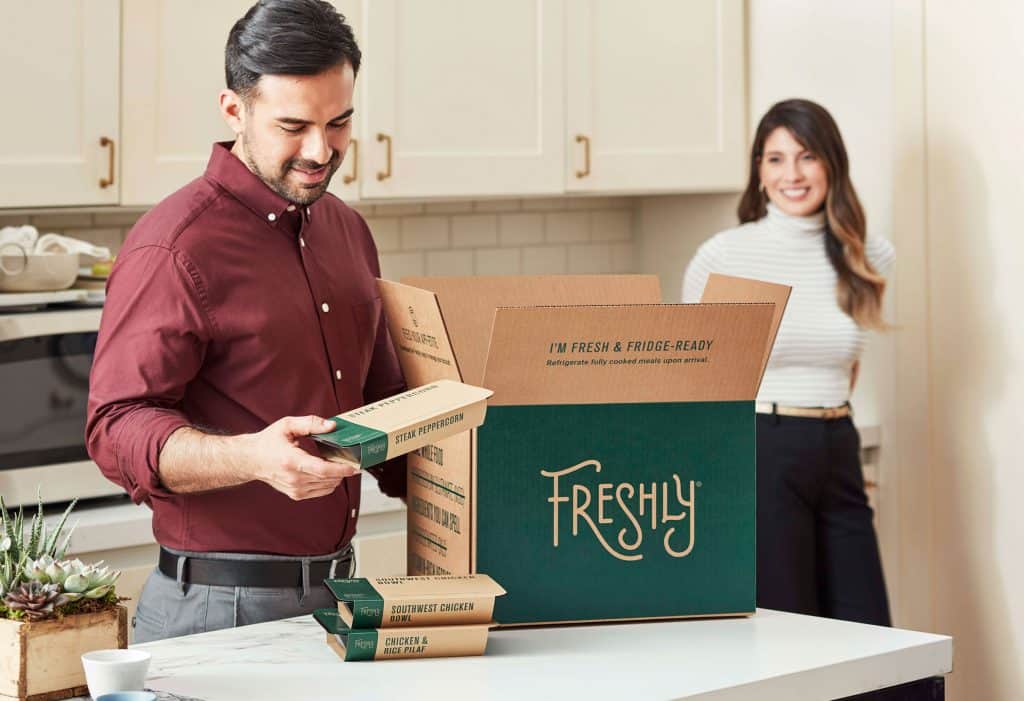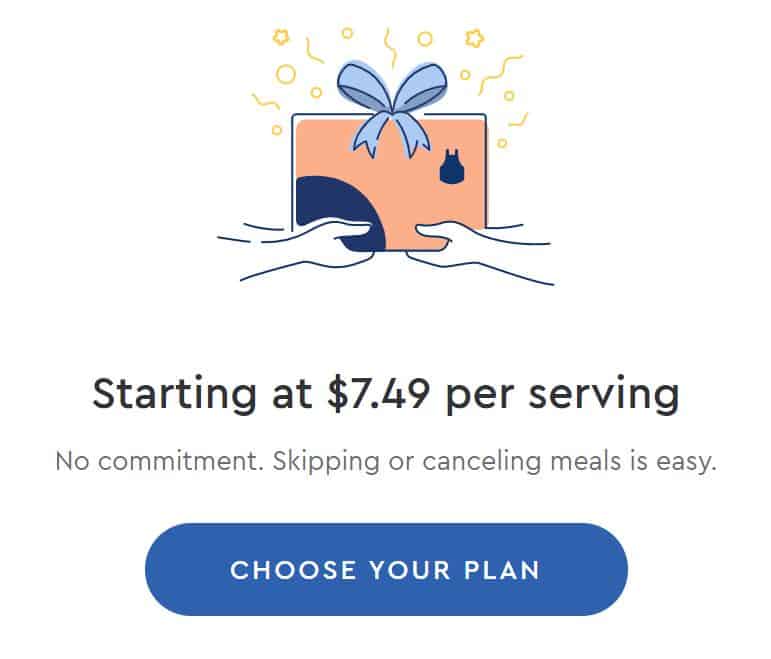For many households, meal preparation on a budget can be stressful because of budget constraints and the hassle of finding various food options. The stress could also come from shopping with an endless grocery shopping list or finding the time to cook during a hectic week.
Let’s get right into how to create a monthly meal plan on a budget!
For families worried about budget and time constraints, a monthly meal plan is an excellent option to save money on groceries while having meals prepared hassle-free on a budget.
This article will cover a few specific topics:
Chapter 1: What is a meal plan
Chapter 2: How to create your own meal plan
Chapter 3: How to save money on groceries
Chapter 4: Meal plan subscription services – a solution when you don’t have time
What Is A Monthly Meal Plan?

A monthly meal plan is simply a way of organizing all the meals you would like to prepare in a month based on budget, ease of preparation, and preference. A meal plan is an excellent option for you if you find yourself consistently overspending on groceries, and yet you have a limited budget.
It is also a good option if you find yourself lacking the energy to cook after a long day at work or an evening of activities with your family.
Planning Your Meals Ahead Of Time
Most pre-planned meal plans are organized around each day of the month and include breakfast, lunch, and dinner options. Since meal plans vary for each family, you can create yours based on your household’s monthly budget, needs, and preferences.
For example, you could design your meal plan around a stringent budget, allowing only one day a month to dine out. Your meal plan could also include one day a week dining out with the family as a treat, with specific meals planned for the remaining six days.
However, we only meal plan dinners for our family since breakfast and lunches are much more on the go than dinner time.
How To Plan A Month Of Meals On A Budget- Simple Steps

Depending on what you want to accomplish, a budget-friendly monthly meal plan will give you a way to know in advance how much you’re going to spend on food for an entire month. Rather than looking back over the month and again wondering how many spontaneous Starbucks purchases and hungry grocery trips you went on, a plan will set you up to spend exactly what you want.
Budgeting For A Meal Plan
It is crucial to make a budget for the month before starting your meal plan. When making a budget, it is best to start by listing all your expenses, starting with fixed and variable costs. Fixed expenses are those that you expect each month, and these usually remain consistent throughout the year. They might include rent, utility bills, auto and home insurance premiums, and internet or cable bills.
On the other hand, variable expenses are those that change each month and are sometimes avoidable. These might include entertainment, gas, or even groceries. They could also include upcoming events such as birthdays, holidays, and travel.
How Much Should You Spend On Meals?
Once you have allocated a portion of your budget for fixed expenses, you should set aside an amount for variable expenses. It is vital to allocate portions that correspond to your needs and consumption realistically.
For example, if your household consumes $500 worth of food a month on average, you should not set a grocery budget for $400, as you will likely be over the budget when you go grocery shopping. Likewise, if you set a budget for $600, you might find that you are spending on a lot of unnecessary items, and yet you could have saved that money.’
Here are a few budgeting methods you can use to plan for meals effectively.
Cash Envelopes

One of the most efficient ways to avoid food budget problems is to use the cash envelope method. This method relies on setting aside cash in envelopes for specific expenses. This method works best with variable costs because it motivates you not to spend all the money in each envelope.
It also prevents you from overspending when you go shopping because you use only cash available, not a credit or debit card. For example, if your food cash envelope contains $500 for the month and you find yourself with $520 worth of items at the store checkout, you are forced to return some things to remain within budget.
Using the cash envelope system also allows you to save more each month because any leftover cash can be transferred to another envelope for savings or reallocated to a different envelope. If you spend more on certain expenses and run out of money in those envelopes, you can always transfer cash from an envelope containing surplus.
Cash envelopes are also a great way to visualize where you are spending your money. This can help you to rethink your spending habits and adjust your budget accordingly.
Track Your Spending
You could also track the amount of money spent on groceries each month to determine which food items last longer and which run out quickly. The cash envelope system is an excellent way to track spending habits because you can track how much cash is left in the food envelope.
It is also a good idea to list the prices of items at your local grocery store before heading out to shop. This will allow you to estimate how much you will spend on each item beforehand. This helps compare spending from different months and determine which food items are more expensive than others.
Using this knowledge, you can decide which items fit within the budget and needs of your household.
Check Your Inventory

Chances are that if you checked your pantry, refrigerator, or freezer before shopping for groceries, there are items that might soon be expiring or have already expired. In many households, people might purchase items and only use small portions, storing the excess amounts for later use. It is easy to forget about these portions, only for them to go bad in the refrigerator or pantry and generate food waste.
Checking your inventory while meal planning is an excellent way to ensure that your food budget is appropriate. If you find that you are consistently throwing out a lot of food, it could be a sign that you are purchasing a lot more food than you can consume.
On the other hand, if you find unused food items in the pantry, refrigerator, or freezer while doing an inventory check, it means that you do not have to spend on these items on your next grocery trip. Using this method will help to save on unnecessary food costs.
Use A Website To Create Recipes Around Ingredients You Already Have

Several great websites on the internet let you enter your existing ingredients, and it will suggest recipes to make based on what you already have. These sites and mobile apps are an excellent way to plug in your existing ingredients and save you lots of money and significantly reduce your grocery spending.
Super Cook
Super Cook has been featured in Time, The Washington Post, and Life Hacker as a great way to reduce monthly food costs.
With the Super Cook website and mobile app, you simply put in the ingredients you already have and the app will spit out great recipes you can make with your ingredients!
Allrecipes Dinner Spinner
Similar to Super Cook, the Allrecipes corporation created a similar app to help people plan meals with ingredients they already have on hand.
Try the Allrecipes Dinner Spinner App here
Organizing A Meal Plan
Once you have finished making a budget for your meal plan, you can start writing down ideas for meals. For a monthly meal plan, it is best to markdown meals for each day of the month. While this can seem stressful, it is a fun process that should inspire creative ideas for recipes, food combinations, and even themes for individual meals.
Here are some creative ways to organize your meal plan.
Using Printables And Meal Planning Templates

Rather than writing out days and corresponding meals on a blank piece of paper, you could use a printable calendar. You can mark down meals for each day of the month on your printable, along with relevant recipes by ingredient.
To make this process faster and more fun, you can break down each week’s days by type or meal preparation level. For example, you could cook dinner on four days of the week, leaving two days for leftovers and one day for a themed family dinner.
A printable makes the organization of the meal plan easier and helps with the grouping of meals. If you barely have time to cook using long recipes during the week, you could even set up easy dinners that repeat every other day or every two days.
With a printable, you can also plan long-term and act short-term. By planning for the whole month, it allows you to think about possible ideas for each week and gives wiggle room if you change your mind as the month goes by. You can also experiment with a sample week to see how the process works before fully adjusting to a schedule.
If you prefer flexibility, you could even shop every week, changing options as you go while maintaining your budget. For example, you could change protein options each week from meals with meat to those without.
It is also essential to leave the printable open to adjustment such that you do not feel stifled by the meal options available.
A printable can also help with reminding your family of the meals for each day of the month. This is also helpful in reminding your children of easy recipes they could make by themselves or which packed lunches to pick from the refrigerator, such as hot dogs for lunch.
Get Creative With Menus and Recipes

Writing out a meal plan also allows you to experiment with different types of menus and recipes. For a monthly meal plan, you can find many simple recipes and meal planning favorites that will provide variety and simplicity in meal preparation.
A great way to plan out meals is to make menu plans and allocate recipes and menus to different weekdays. Having go-to recipes on your weekly meal plans takes off time and stress if you can make an easy meal in the shortest amount of time. Similarly, you could plan to have your favorite recipe on a stressful day, allowing you to relax as you prepare dinner.
A good menu plan also uses key ingredients for multiple meals in the week such that you can cook less often but have more meals. For example, you use tomato paste or parmesan cheese for cooking a pasta dish and a chicken sauce, and you can plan to have these meals cooked in the same week.
Many websites offer limitless recipes perfect for your family. Many of these are easy recipes with step-by-step instructions, making it easy to follow along. Trying out these recipes can be a great way to experiment with new flavors and dishes. You could also try out different combinations of sides and main dishes.
For example, you could combine green beans with potstickers. It can also be a fun family dinner activity to try out new recipes for their potential as family favorites.
Plan Around Your Schedule
The benefit of menu planning is that you can make it work based on your schedule. This means that you can plan to cook heavy meals when you have more time and lighter meals when you are super busy.
A neat strategy to prepare heavy meals on busy days is to cook using a slow cooker or crockpot.
With the different sizes of slow cookers available, you can choose a size and type that fits your needs and preferences. For example, you can use a large slow cooker to make heavier meals that can last a few days, such as meat dishes. You can use a smaller slow cooker for cooking meals such as rice or mashed potatoes, which can be eaten in one seating.
Our Secret Meal Hack
To speed up slow cooker meals, an Instant Pot found on Amazon is an excellent tool to whip up meals in a snap!
If you have lots of free time (I envy you), you could also make meals from scratch. It might be cheaper for meals such as pastries to bake from scratch using individual ingredients than with a prepackaged mix. For family night activities, you could even make a homemade pizza using ingredients from scratch.
The benefit of such meals is that you could easily have leftover ingredients to use for the next time you prepare the meal.
On the other hand, you can plan to have frozen dinners on busy nights. A frozen pizza would be a great option at the end of a busy day because you just warm it up in the oven. You could even plan theme nights for frozen dinners, such as Italian night featuring a meatball menu.
Grocery Shopping Using A Meal Plan

Once you have your meal plan set, it is time to go grocery shopping. As you plan to go grocery shopping, you should have a list of items to shop for, based on your budget, meal plan, and inventory check. Making this list will also help determine whether the groceries you intend to buy fit your food budget.
Save Money With Cash Back Apps
Here are some tips on saving money while grocery shopping while also sticking to your meal plan.
Use Rewards Programs
If you have not tried one already, rewards programs can save you anywhere from a few cents to hundreds of dollars when you shop for groceries. Some of the popular rewards programs, such as Ibotta and Fetch, provide customers with the option of scanning receipts after purchasing items to redeem points that can be used for cashback rewards.
Fetch Rewards

Fetch is a free rewards app that allows you to scan your store receipts to the app and receive cash back for your purchases. By taking a picture of your receipt with your phone, the app will do the rest of the work to save you money on eligible purchases.
Click here to try Fetch Rewards for free!
ibotta

According to recent statistics, the average ibotta user saves $150 a year on groceries. By using the ibotta app on your mobile phone, you can look for deals and top dollar cash back items to purchase at your local grocery store.
Click here to download ibotta for iPhone | Click here to download ibotta for Android
Some credit card companies offer cash back for shopping at specific stores, but this can be tricky if you try to save money. It is tempting to overspend when using a credit card at checkout. The benefit of using rewards programs like Ibotta is that they partner with thousands of retailers, giving you the flexibility to shop for groceries while earning rewards.
These retailers include grocery stores, clothing stores, and home improvement stores, which means that you can plan all your household spending at as many stores as possible. You can also link your loyalty accounts to your favorite retailers, allowing you to earn more rewards. Rewards programs are great for shopping in stores like Walmart, which has a selection of groceries, household items, and clothing.
Rewards programs such as Fetch also allow you to earn rewards for purchasing brand name items at different stores. This is a great option if you prefer a specific brand item listed under the rewards program. With busy schedules involving grocery shopping, cooking, and spending time with family, a rewards program gives you a few days after purchasing items to scan your receipts and redeem rewards.
Buy Items in Bulk

Bulk buying groceries can also save you money each month on items your household tends to consume faster. In most stores, items sold in bulk are cheaper than those sold in smaller quantities. For example, it might be cheaper to purchase food items such as dry beans or flour in bulk for the month than buying smaller amounts each week.
If it fits within your budget, a membership at a wholesale club such as Costco, Sams’ Club, or BJ’s can save you hundreds of dollars over time. These stores are especially beneficial to large households since they sell most of their bulk items, unlike traditional grocery stores.
You could easily find items such as salmon or chicken breasts sold in bulk at Costco, Sam’s Club, or BJ’s at budget prices. When you buy food items in bulk, you also have the option of cooking a large meal that can be eaten over several days, saving you time and money.
Buy Items In Season And On Sale
It is also a significant investment to buy fruits and fresh vegetables when they are in season. You will probably get larger quantities at much lower prices than if you buy them offseason.
Local farms and orchids are great places to buy fruits during the season. If you are open to experimenting, you can preserve fruits for a few months by either freezing, canning, or drying them. Chances are fruits and vegetables sold during the season are also much fresher than those sold in the offseason.
Buying items on sale is also a great way to save money, especially when they are seasonal. You can observe trends for things that usually go on sale around specific times and use this to your advantage while meal planning. If you planned and budgeted for sale items, it could save you a lot of money if the items went on sale around the time you anticipated.
Buy Items to Make Your Own Beverages

Most people spend a lot of money on beverages such as tea, coffee, or juice, yet they could make these themselves. It is far cheaper to buy coffee beans, grind them, and brew coffee in the comfort of your home than buying coffee from Starbucks every morning. You could also purchase tea leaves and brew tea yourself rather than purchasing tea from a coffee shop.
Best of all, these activities could be a fun addition to your morning routine.
Similarly, you could buy fruits in bulk to make your fruit juices or smoothies, rather than purchasing these from a coffee shop or store. You have the option of making your homemade fruit juices and smoothies healthier since you can substitute ingredients containing artificial sugar with natural sugar.
You also end up making larger quantities of homemade juices when you buy fruits in bulk, compared to the smaller prepackaged quantities of juice sold in stores.
Eliminate Unnecessary Items
If you are looking to save even more on your budget, you can eliminate those food options that you think are not healthy or those you consider treats. For example, rather than buying juices, you could stick to only drinking water. You end up consuming less sugar and hydrating more as you drink more water.
You could also switch from buying unhealthy snacks such as cookies and sweets and buy healthy options such as fresh fruits and vegetables. Snacks like sweets and cookies might be more expensive than more nutritious snacks like baby carrots or apples.
Another strategy is to buy alcoholic drinks such as wine and beer only on special occasions and holidays. Alcoholic beverages are generally more expensive than non-alcoholic drinks, and preserving alcohol for special events makes it even more special.
Use A Monthly Meal Plan Service

Let’s be honest, few of us have the free time to put together our own meal plans. My wife and I have subscribed to monthly meal planning services that will deliver a set amount of dinners based on our ingredient preference and budget. Here are a few meal planning services we have tried and would recommend.
#1. HungryRoot – $40 Off Your First Order

HungryRoot is the current meal subscription service my family uses. We enjoy the wide selection of available recipes that are vegan friendly.
How it works
- Tell HungryRoot what food you enjoy – no meat, no gluten, love pasta? They will tailor their recipes to your likes.
- HungryRoot will shop for you or you can choose your own items.
- Items are shipped with easy recipes: meals ready to eat within 10 minutes.
- No more trips to the grocery store
Try HungryRoot and save $40 off your first order here!
#2. eMeals – Free 14 Day Trial

eMeals is quickly becoming one of the top competitors in the monthly meal planning space. eMeals uses an approach where they provide you with a mobile app to help you pick the best recipes to fit your lifestyle each week.
You can create your grocery list and send your grocery list directly to stores such as Amazon, Walmart, Kroger, Instacart, or Shipt!
By taking the planning out of it, emeals helps families save time and money by doing the heavy lifting on the front end so you can enjoy homecooked family meals each week.
Try eMeals here for 14 days – free!
#3. Freshly

Freshly boasts an impressive 30+ menu of all-0natural dishes which are cooked by chefs and sent fresh directly to your home. The average cook time for these great meals is only 3 minutes!
Freshly Pricing
Freshly offers four separate plans:
- 4 meals per week – $11.49 per meal
- 6 meals per week – $9.49 per meal
- 10 meals per week – $8.99 per meal
- 12 meals per week – $8.49 per meal
*You may cancel your subscription at any time
Click here to try Freshly today
#4. Blue Apron – New Customers Save $60 Over Their First 3 Orders
Blue Apron is one of the original meal planning services which continues to thrive.
How it works
- Choose your meals which range from customer favorites and health-conscious options to the more particular consumers, including Keto and Vegan.
- Your items are shipped directly to your door in an insulated container with recyclable ice packs and packaging.
- Comprehensive recipe cards are delivered with your meals that you can use over and over again.
Click here to try Blue Apron today and save $60 as a new customer
#5. Green Chef – Save $60 On Your First 3 Boxes
Green Chef focuses their meal planning on four main meal plans:
- Keto
- Balanced Living
- Plant-Powered
- Carb-Conscious
With this simple yet effective menu strategy, they concentrate on providing quality to their customers rather than quantity and a million different food options.
Click here to try Green Chef and save $60 on your first three boxes.
#6. Hello Fresh

HelloFresh is one of the cheaper overall options and routinely run discounts and specials for new customers. Because they focus on fresh ingredients, their menu can change on a weekly basis depending on the availability of fresh produce.
How it works
- Skip meal planning and grocery shopping with step by step recipes and meals brought right to your door.
- Set your meal plan based on your food preference and choose from 22+ weekly fresh recipes.
- Meals are delivered three times a week and you can cancel or delay your subscription at any time.
Click here to try Hello Fresh and the latest promotion!
Meal Planning Should Be Fun
Although it might seem overwhelming and tedious, meal planning should be fun. It is a process in which you can experiment with different recipes and menus while hopefully discovering new family favorites.
Once you get accustomed to budgeting and meal planning, you will be overjoyed at how much you are saving and how much you learn about different food options.




